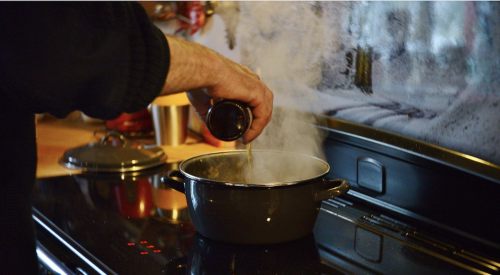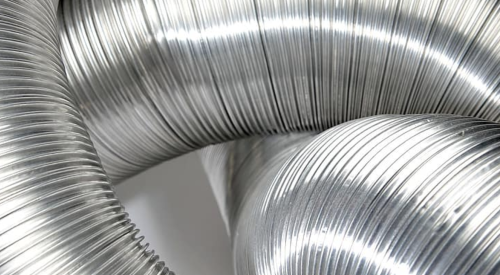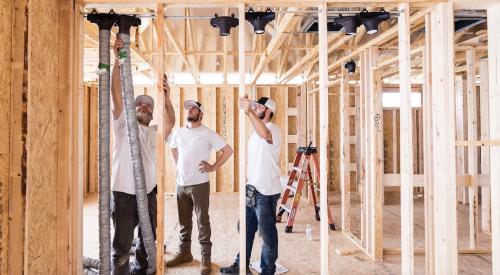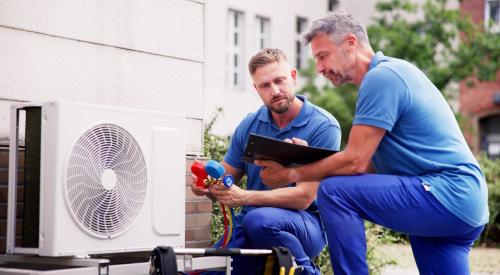|
|
|
Are your HVAC ducts going in according to a specified plan? Are they being tested? If not, are you feeling lucky today? Because unsatisfactory ductwork delivery systems are common in most of the nation.
Consider this online statement from research scientists with Lawrence Berkeley National Laboratory: "A California duct system wastes about 40% of the power it consumes on a hot day." About two-thirds of those losses slip out duct leaks or poorly insulated ducts.
This is not just a California problem. In fact, California and Florida - which account for about 20% of the nation's housing starts - appear to lead the nation in the quality of ductwork installations. But while building codes have long stipulated "substantially tight ductwork," building industry trainers such as John Tooley, a senior scientist with Advanced Energy in Raleigh, N.C., say the quality of ductwork installations in most states leaves a lot of room for improvement. Regions with ductwork located in basements tend to have the leakiest ducts, while those with ducts in crawl spaces and attics typically pay the largest energy penalties.
Fortunately, a growing number of HVAC contractors and builders are attacking ductwork problems with help from a variety of sources. California's HVAC industry is moving forward faster than most.
| Manual D calculations lead to different sizes of ductwork. Shown here are 4-inch, 5-inch, 6-inch and 7-inch supply ducts carefully sealed with mastic.
|
Drivers for Change
Codes get top billing among drivers for change. Mechanical and energy codes are being pushed by results from expanded field research. Ductwork in Florida might be the best in the country thanks to codes, utility activism and building science training.
Consumer complaints are a growing factor. Last year a homeowner survey, "What Consumers Want," by Contracting Business magazine showed that comfort expectations and complaints have increased. Just more than half (55%) of respondents said said they were very satisfied with their comfort systems - a number unchanged since 1994. But only 40% of respondents said all their rooms are comfortable, down from 51% in 1994.
Once consumers are educated, the survey reported, they are willing to spend significantly more (as much as 30% to 50% of total system cost) to have comfortable, healthy and safe indoor environments.
Training and testing provided by third-party entities such as Building America, Masco Corp.'s Environments for Living, Engineered for Life, E.I.C. Corp.Æs Comfort Home and energy utilities are helping accelerate improvements in HVAC ductwork.
Several builders acknowledge that mold is a recent driver for their improved ductwork designs and installations. There is a definite link between mold and ductwork leakage. Pressure problems within spaces (rooms and in-floor cavities) can pull moisture indoors or force moisture into the exterior shell. When that happens, mold can develop in unseen locations.
Just Part of the Picture
HVAC systems are the heart of a high-performance home. And, yes, they are complex, interactive systems. For that reason, a perfectly designed and installed ductwork system wonÆt prevent all HVAC problems.
Find an HVAC contractor and installers whose training includes good building science principles. They need to understand both ductwork and related house pressures. At the end of the day, they must be able to connect the dots that make their HVAC systems so crucial to healthy, safe, comfortable, durable and affordable housing.
Then comes properly sized heating and cooling equipment, based on calculations. Identify how much conditioned airflow each room needs. Finally, performance testing and commissioning must be part of the equation.
Steve Andrews is a Denver-based energy consultant, freelance writer and EEBA board member.












